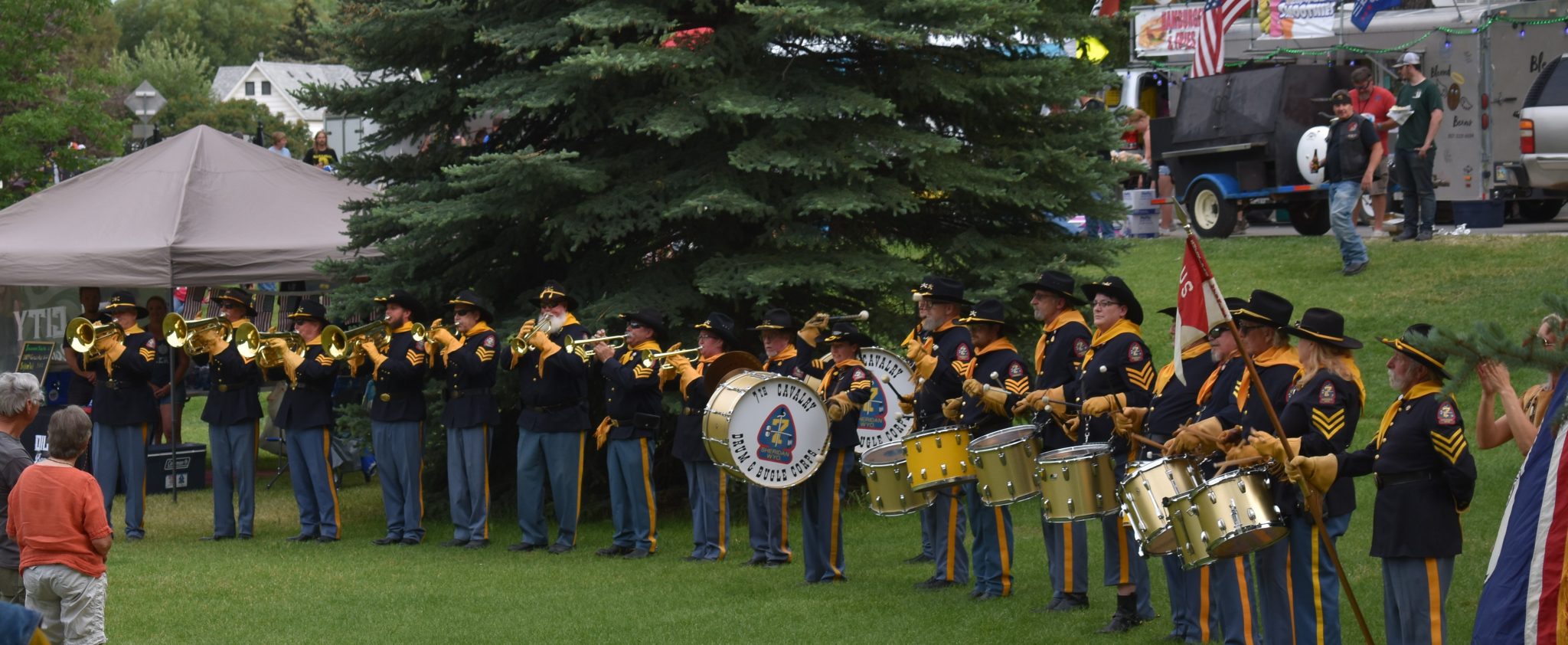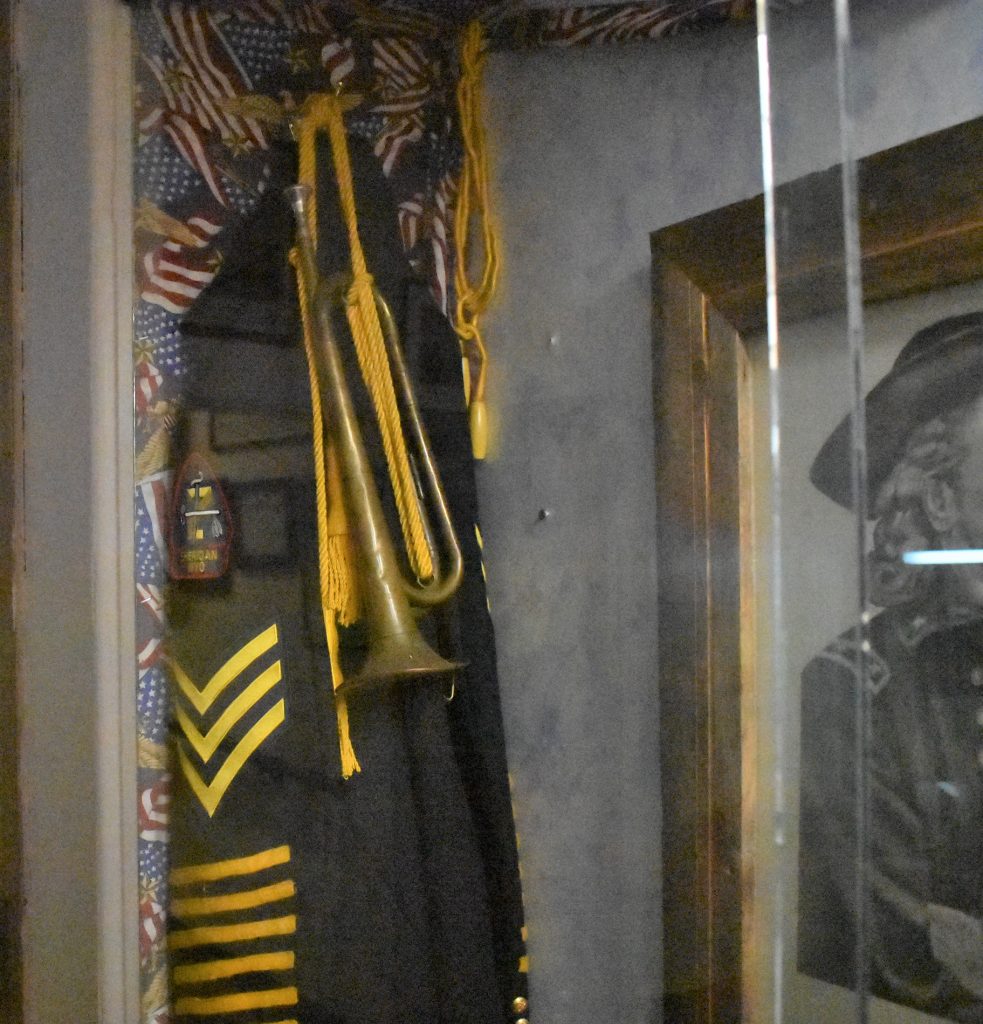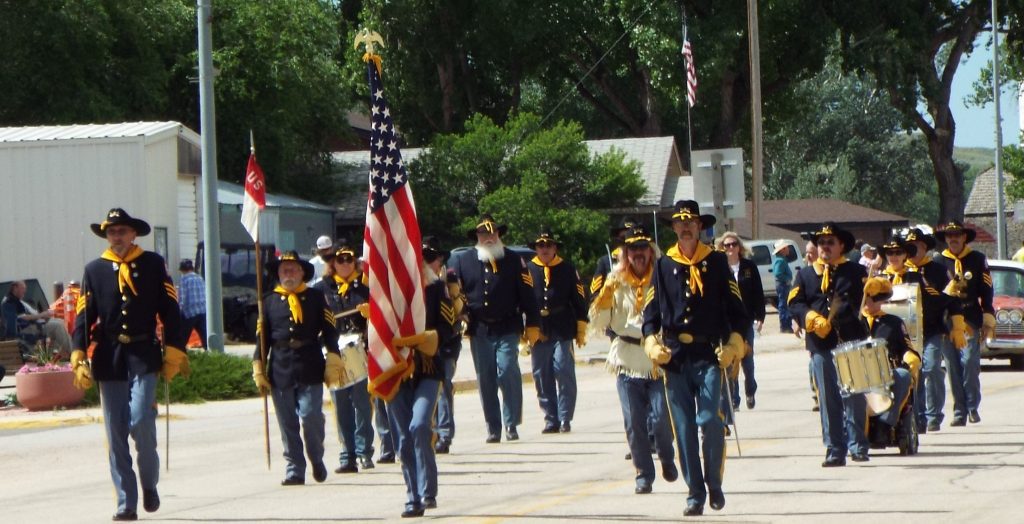News
History of Sheridan’s Drum and Bugle Corps

American Legion 7th Cavalry Drum and Bugle Corps performing the Combat Veteran’s Motorcycle Association
Sheridan’s American Legion 7th Cavalry Drum and Bugle Corps is a common sight in parades and other events around the Sheridan area. Carrying the colors, marching down main street, and making traditional music. But how did this fine musical group get it’s start?
In 1929, T.T. Tynan started the American Legion Sheridan Post #7, Drum and Bugle Corps. Hoff tells about finding Tynan’s bugle, now in the display case at the Sheridan Legion Club.
The Sheridan Post #7 post is named for Hoff’s great-great uncle, 2nd Lt. John Donald Garbutt, who was born in 1896 in Sheridan, Wyoming and Commissioned 2nd Lt. Sept. 28, 1918.
He was an instructor in air service aeronautics at Carruthers Field, Texas, and was killed in plane accident at the field in 1919. Many posts are named for local fallen WWI soldiers.
At first, the members of the Corps wore their service uniforms, but in 1952, wanting a new look, and a look that embraced the history of this area, the Corps asked permission from Congress and the War Department to wear the uniform of Custer’s 7th Cavalry.
The Wyoming Congressional Delegation supported a bill in Congress to allow the Post #7 Drum and Bugle Corps to wear the 1877 uniform of 7th Cavalry and to carry the pennant that George Armstrong Custer’s unit carried into battle. The uniforms are authentic reproductions of those worn by Custer’s men, right down to the leather gauntlets, cavalry hats, and neckerchiefs. Now renamed “American Legion 7th Cavalry Drum and Bugle Corps,” the group debuted the new uniforms on June 25, 1954 at the 78th Anniversary of Custer’s Last Stand.
The Sheridan corps first drew state-wide recognition when it presented a drill at the state Legion convention in Cody in 1931. Over the years the unit has walked off with many first place awards in drill and parade competitions. Drum and Bugle Corps are popular in many communities, but what is the background of these marching bands? Classic drum and bugle corps are descended from military drum and bugle units. Drum and bugle corps began as signaling units in the Continental Army during the Revolutionary War, just as the ancient drum and fife corps were in Europe.
Bugles have been used in the Army for various signals. If you were an enlisted man prior to the end of WWI, your life was regulated by the sound of a bugler.
The bugle call could rise above the sounds of battle, or to rouse exhausted soldiers from their sleep. There were bugle calls for reveille, (wake up at sunrise), breakfast, dinner, and supper; drill call, officer calls, taps for lights out, and even Sunday service calls. Before the cavalry was mechanized, there were stable and water calls to take care of the horses; boots and saddles, (getting the horses ready to move out), and other horse care related calls.

Reveille was one of the longest bugle calls in camp. Before the last note was played, troopers were expected to be dressed and in formation for morning role call and to hear what was happening for the day. In an old Irving Berlin song, “Oh How I Hate to Get up in the Morning,” the soldier thinks about doing in the bugler, and then ‘the other pup, the guy who woke the bugler up.’ Many soldiers probably shared his attitude at various times.
In battle there were different calls to tell the troops to walk, trot, gallop, and even wheel left or right. And, of course, Charge! to let the men, and horses, know it was time to charge into the guns.
The cavalry horses knew all the calls as well. When the bugle sounded, they responded. They recognized the call for feed and water, saddle up, and above all, Charge!
In the movie, “In Pursuit of Honor” with Don Johnson, the horses were trained to come to a bugle call, which would work well if the horses were separated from their units, or a way to bring in the remounts when they were out on pasture.
Another scene, when the horses reached the Canadian border, showed the horses responding to the bugle calls for trot, canter and charge.
Military drums were used in many ways, to demoralize the enemy, set up parleys, communication between ranks, for drills; and in military ceremonies and honor music, such as the drum roll. In the Civil War drummers, usually young boys, were an essential part of military bands, as the drums helped to keep the time to regulate the soldiers marching in battle and on parade.
With the advent of the electronics and the radio at the end of WWI, bugle signaling units became obsolete. The surplus equipment was sold to veteran organizations, the VFW and the American Legion, two major organizers for classic drum corps.
At one time the various corps used Legion rules in competitions. According to Wayne Hoff, “There was a big conflict between the VFW and American Legion, over which rules to use, and neither side would back down. The two groups walked out on each other.”
Today, as far as Hoff knows, the Sheridan Corps is the only Drum and Bugle Corps attached to an American Legion Post.

In May of 2006, the Corps performed at the Memorial Day Parade in Washington, D.C. They played traditional Corps songs such as Garryowen, Custer’s 7th Cavalry marching song, while marching down Constitution Ave.
As well as Washington, DC, the Corps has traveled throughout Wyoming and the West. They once marched in Philadelphia and at the National Legion Convention in Baltimore in 2015.
The membership in the Corps is all volunteer, and money to travel is raised through fund raisers. “We plan a couple of years in advance,” Hoff said.
Today, the American Legion 7th Cavalry Drum and Bugle Corps keep the history of the area alive, with the authentic uniforms, and the music that was a part of every a Cavalry man’s day on the Wyoming plains during the 1860s and 1870s.


William Bittner
January 21, 2022 at 7:25 pm
In 1961 to 1963 I marched with the 7th Calvary Drum & Bugle Corps from Paramount Calif. There sponsor was the Woodmen Of The World. Same uniforms and everything.
Robert Husted
November 18, 2024 at 5:13 pm
Great band. They were always a tremendous treat at the Miles City Bucking Horse sale